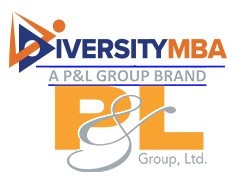by Lisa Bennett
A top-notch marketing kit is your first line of offense in an increasingly competitive market. Getting your prospects’ attention long enough to look through the pages and motivating them to pick up the phone and call you is the ultimate goal. Whether you’re meeting face-to-face or marketing through direct mail or the Internet, your marketing kit speaks volumes about your company, so make sure your message is coming through loud and clear.
“A marketing kit is not a one-size-fits-all for every business,” says Carla Alvarez, owner of Legacy Marketing Services. “The type of marketing kit and what you choose to include will vary based on your business needs. I’m a big proponent of meeting prospects in person whenever possible. Everyone wants to know someone in business. They want that personal connection for reassurance that your company is not just a bunch of shareholders, but a person who is passionate about what they do.”
She believes a good marketing kit doesn’t have to answer every question your prospects may have about your business, but should intrigue them enough to call you for more information. “An effective marketing kit should include one comprehensive piece with a lot of details about your company, one brochure with an overview of what you do, and one relevant promotional product that will be useful to the client,” she says. “One of the more interesting pieces I’ve seen was done by ServiceMaster. It sent a marketing kit including some printed pieces and a sponge that the prospective client would use to wipe off their kitchen countertop and send back to ServiceMaster to be analyzed. It was a clever piece that got the customer interested in the process and didn’t break the budget. ServiceMaster isn’t in a position to meet prospective clients on a face-to-face basis, so it did the next best thing by using an engaging marketing kit.”
Alvarez additionally stresses the need for a first-rate Web site: “There is no way in this day and age, any company can be in business without a Web site. It is critical for your business that you have one that’s easy to use, and, more importantly, easy to find. A Web site is one of the best investments a company can make in its business. With so much business research done online, you simply cannot afford to be in business without one, particularly if you’re in a business where your prospective clients may be difficult to reach.”
When you think about the traditional marketing kit, most people envision a colorful two-pocket folder with brochures, collateral material and perhaps an imprinted inexpensive pen or small notepad tucked inside. Ivana Taylor, President of Thirdforce, Inc. and author of the popular blogStrategystew.com, says the first step in a successful marketing kit is to throw out any preconceived notions you may have accumulated and start thinking about your client’s needs.
“If you want to be in business 20 years from now,” she says, “you better be doing what the 20-year-olds are doing today.”
Taylor explains that the key to a successful marketing kit is to be able to modify the material to fit each customer. Her solution? The Internet. First of all, no one wants paper,” she says. “It’s the green thing to do, but beyond that, how many times have you been to a trade show and seen people dumping the literature in the trash on the way out? It’s too heavy and doesn’t accomplish much beyond cluttering your desk. With the onset of technology, specifically desktop publishing and budget-priced printers, you can make and customize brochures for your clients as you need them, rather than ordering cases and cases of printed goods at an exorbitant price. It also allows you to use the same information on your Web site, and heaven forbid, if there’s a typo, you can correct it immediately instead of sitting on $10,000 worth of brochures rendered useless because of a misspelled word.”
Taylor also feels using an online marketing kit is a better way to communicate everything you can do for your prospective client without overwhelming them with too many brochures and catalogs. “In order to get your prospects to choose you,” she notes, “you have to communicate why you’re the best fit for them rather than having them base the decision on price alone. If your client is complaining about price, he or she doesn’t completely understand what you do and why you’re the best choice.”
She considers Starbucks the ideal example of excellence in understanding clients. “Here you have a free-standing store that sells plain black coffee for $1.84 when you can walk across the street to the 7-Eleven and get the same thing for less than half the price,” she says. “The reason Starbucks has been so successful is that it took the time to figure out who the client is and what would appeal to that client. Price doesn’t enter into the equation.”
Finally, Taylor says knowing your client is the essential key to a marketing plan that works. “If you don’t know your customers and what their needs are, you’re better off saving your time and money and spending your time making face-to-face sales calls and selling on relationships alone. If that doesn’t appeal, you need to develop a viable plan.
Lisa Bennett is a freelance writer based in Chicago.










